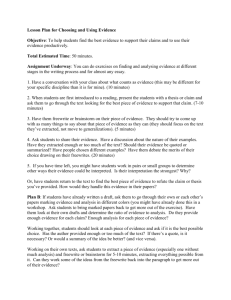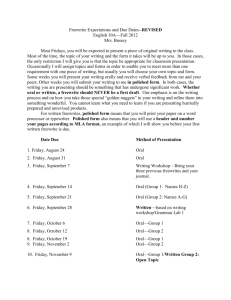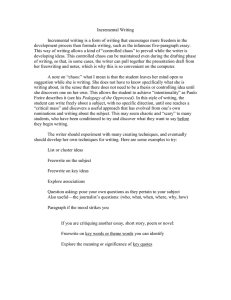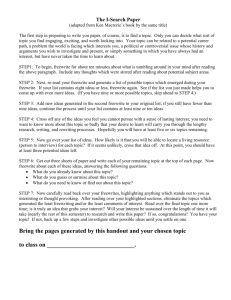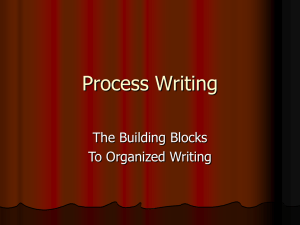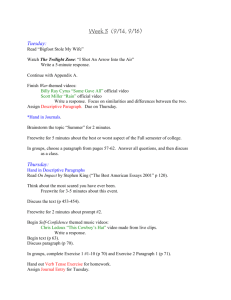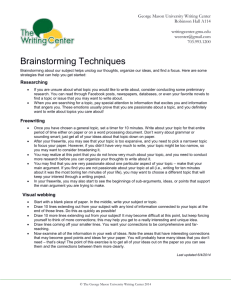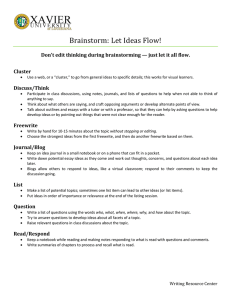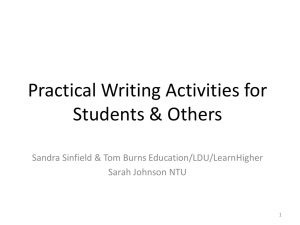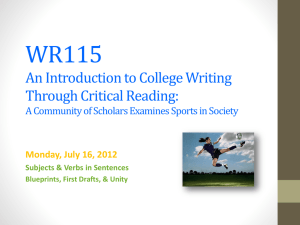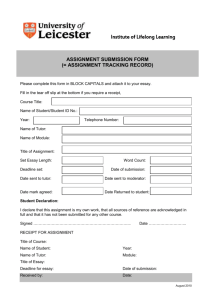Essay Writing Process: A Step-by-Step Guide
advertisement
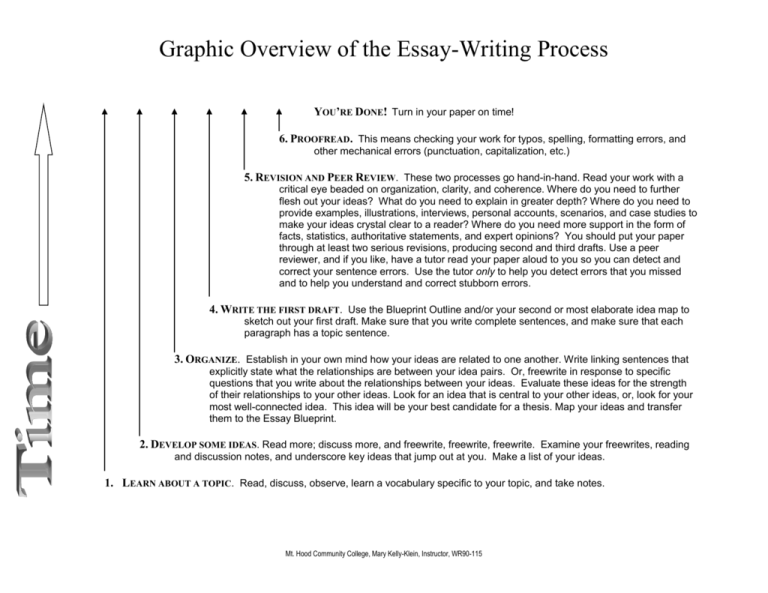
Graphic Overview of the Essay-Writing Process YOU’RE DONE! Turn in your paper on time! 6. PROOFREAD. This means checking your work for typos, spelling, formatting errors, and other mechanical errors (punctuation, capitalization, etc.) 5. REVISION AND PEER REVIEW. These two processes go hand-in-hand. Read your work with a critical eye beaded on organization, clarity, and coherence. Where do you need to further flesh out your ideas? What do you need to explain in greater depth? Where do you need to provide examples, illustrations, interviews, personal accounts, scenarios, and case studies to make your ideas crystal clear to a reader? Where do you need more support in the form of facts, statistics, authoritative statements, and expert opinions? You should put your paper through at least two serious revisions, producing second and third drafts. Use a peer reviewer, and if you like, have a tutor read your paper aloud to you so you can detect and correct your sentence errors. Use the tutor only to help you detect errors that you missed and to help you understand and correct stubborn errors. 4. WRITE THE FIRST DRAFT. Use the Blueprint Outline and/or your second or most elaborate idea map to sketch out your first draft. Make sure that you write complete sentences, and make sure that each paragraph has a topic sentence. 3. ORGANIZE. Establish in your own mind how your ideas are related to one another. Write linking sentences that explicitly state what the relationships are between your idea pairs. Or, freewrite in response to specific questions that you write about the relationships between your ideas. Evaluate these ideas for the strength of their relationships to your other ideas. Look for an idea that is central to your other ideas, or, look for your most well-connected idea. This idea will be your best candidate for a thesis. Map your ideas and transfer them to the Essay Blueprint. 2. DEVELOP SOME IDEAS. Read more; discuss more, and freewrite, freewrite, freewrite. Examine your freewrites, reading and discussion notes, and underscore key ideas that jump out at you. Make a list of your ideas. 1. LEARN ABOUT A TOPIC. Read, discuss, observe, learn a vocabulary specific to your topic, and take notes. Mt. Hood Community College, Mary Kelly-Klein, Instructor, WR90-115 Graphic Overview of the Essay-Writing Process Writing an essay is a recursive process, Scholars. This means that we continue doing a task even as we begin a new task. When we write an essay, each task is sequential, but we do not completely stop doing the previous steps. So, even though the first thing we do when we write is inform ourselves about our topic, we do not stop the process of self-informing. We continue to look up facts, figures, and other viewpoints in order to clarify our thinking and writing. For example, we may look up examples as we are writing a second or third draft. The recursive process doesn’t even stop, Scholars, after the paper is turned in. It becomes a part of you, and hence, throughout your life, you will always retain and build on what you have written. Mt. Hood Community College, Mary Kelly-Klein, Instructor, WR90-115
